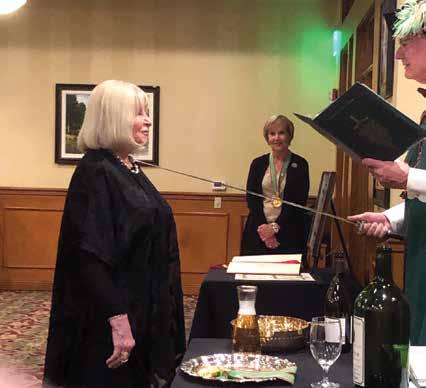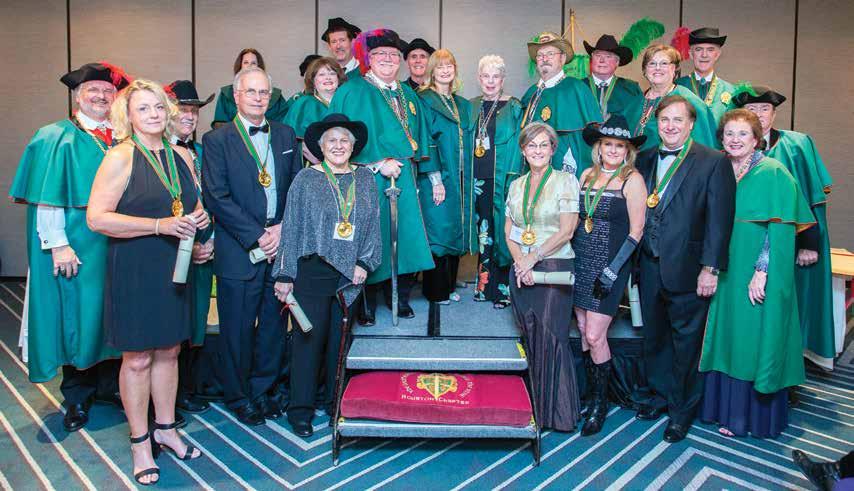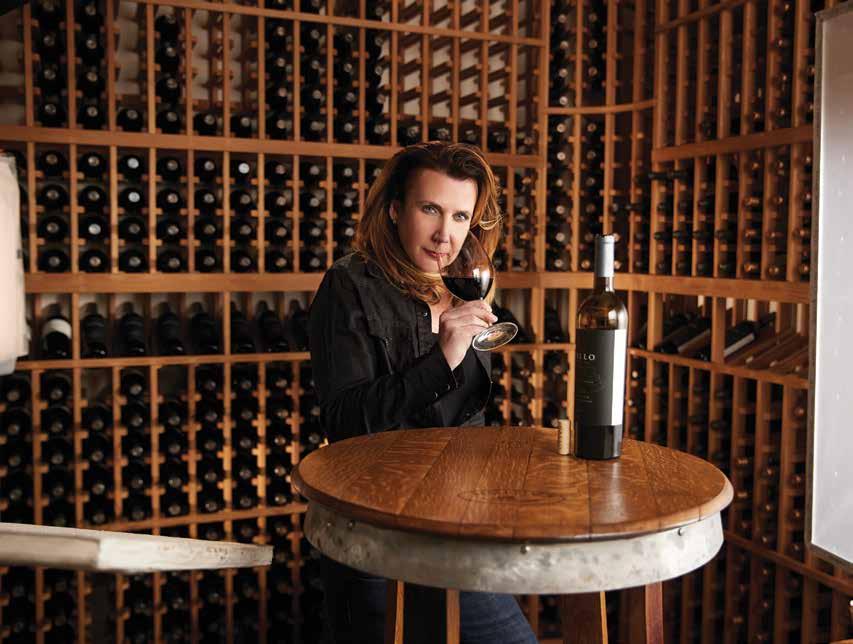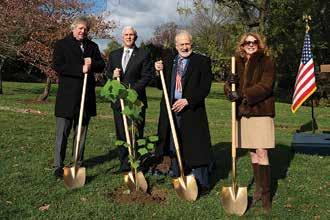
3 minute read
Nation’s Capital
Virginia: First in Wine
By Master Knight Dave Barber
When the Virginia Company first sent ships to the New World in the early 1600’s, one of the major reasons was to establish a wine industry there. There were reports that many native vines thrived in that part of the world, so why not capitalize on the natural resources? All well and good, the first wine made in Virginia was in 1609, from “hedge vines” that were found wildly growing in the area. Needless to say, this was not similar to the wine the colonists were used to drinking, and the small amount shipped back to England had spoiled on the voyage. Nevertheless, the pursuit of making wine in Virginia continued.
French winemakers were sent to Virginia along with European grape stock. The House of Burgesses even passed a law requiring that ten vines were to be planted for every male in the colony. These efforts still were not successful, especially due to all the new diseases and challenges unbeknownst to these new European transplants. Fortunately, another agricultural crop, tobacco, was found to flourish and kept the colony in good stead.
The pursuit of wine continued to be strong along the whole eastern coast for years. As many vineyardists realized, the problem in growing grapes may be specifically with the vitis vinifera or European family of grapes. As the years passed, there were many hybridists trying to create new varietals of grapes through cross-breeding that would grow and provide palatable wines. One such person was Dr. Daniel N. Norton of Richmond who discovered a “wild vine” growing on his farm in the early 1830’s. He nurtured this vine and proliferated it and it soon was growing throughout the eastern states. This vine was named Virginia Claret and soon produced award winning wine in many European competitions, and was even named the best red wine of all nations. (After Prohibition, the Virginia Claret grape was again planted, but this time known as the Norton grape.) Soon, however, the Civil War broke out as well as local movements of prohibition of alcohol. Both of these events caused the eastern, and specifically the Virginia, wine industry to suffer. It wasn’t until the early 1960’s that another interest in Virginia wines began to develop. As the various farming industries were becoming less profitable, many landowners were looking for a means to diversify their land holdings.
The initial plantings at this time were of hybrid varietals as these were thought to grow better than vinifera. But everyone was more familiar with the European vinifera. It didn’t take long before they were also planted. In fact, now, Chardonnay is the most widely planted varietal in Virginia. Today’s vineyardists are still trying to discover the best grapes to grow. Cabernet Sauvignon will only fully ripen every two to three years due to weather conditions, but is still grown throughout the state. Norton, the native Virginian grape, still produces some very fine wines. Cabernet Franc has taken over the ranks as favorite red varietal to some extent, but Petit Verdot is following very closely in popularity. As for the whites, Viognier has become so popular that it has been designated as the state signature grape. Great success has also been seen in plantings of Albariño and Petit Manseng. The newly developed hybrids of Chardonel and Traminette are also gaining many supporters, along with the traditional red hybrid of Chambourcin. Meanwhile vineyardists are still planting other varietals, hoping to discover that one favorite varietal for their location.
Virginia is a strong wine state. There are currently seven American Viticultural Areas (AVAs) in Virginia. and close to 300 wineries, each making great wines. Many of the wines are world-class. However, don’t run out to your local stores looking for them as most of the wineries have still rather small production and limited distribution. If you’d like you enjoy wines from Virginia, try ordering them directly from the winery.
Why not plan your next vacation in Virginia and explore our wine industry? You’ll be pleasantly surprised with what you find and what has developed over the last four hundred years of winemaking. You will see that Virginia truly is “First in Wine” and that you will need glasses to fully enjoy the liquid bounty here.










